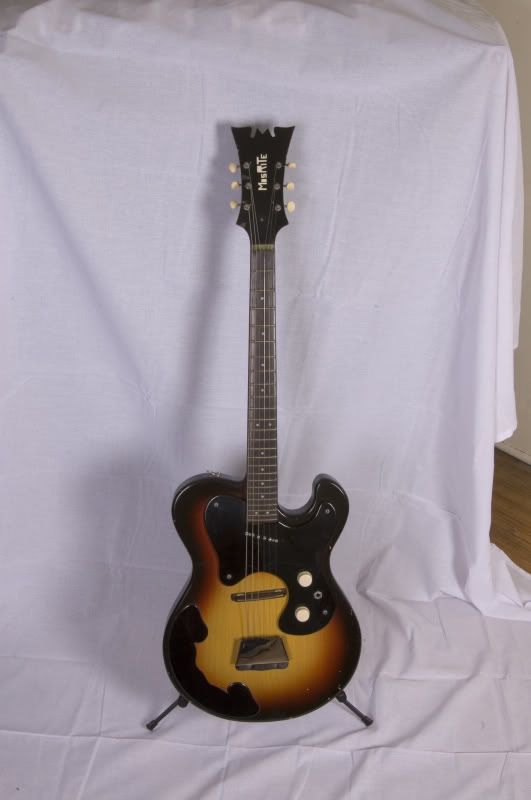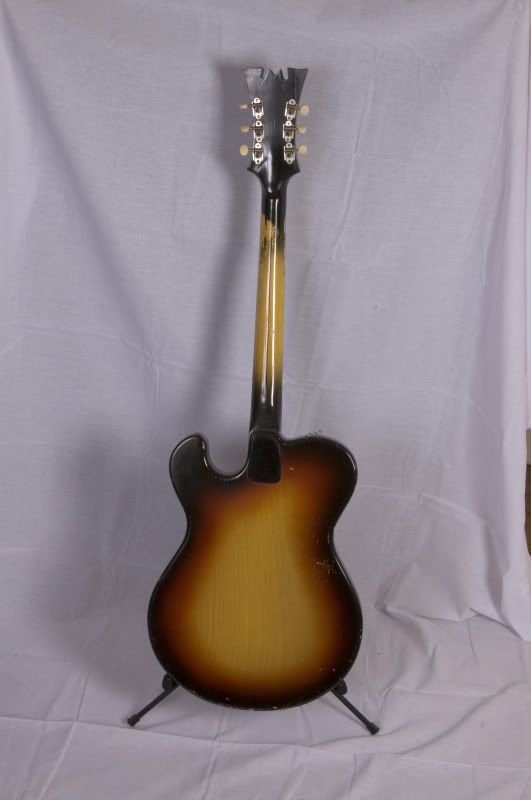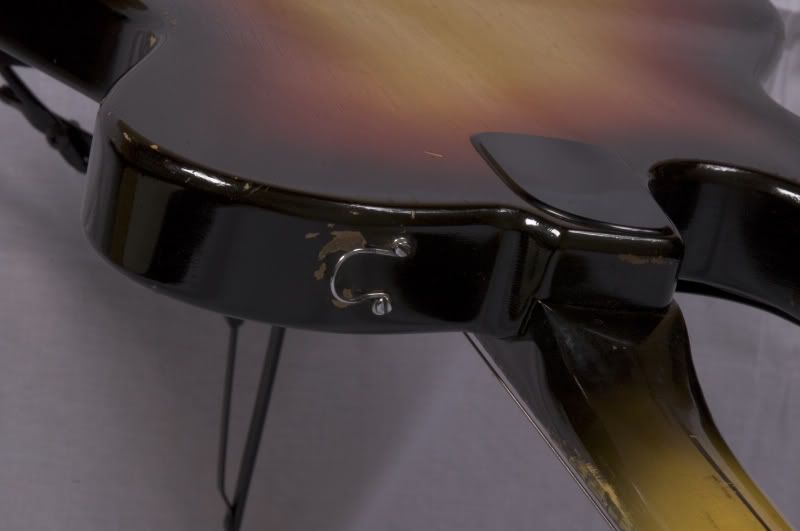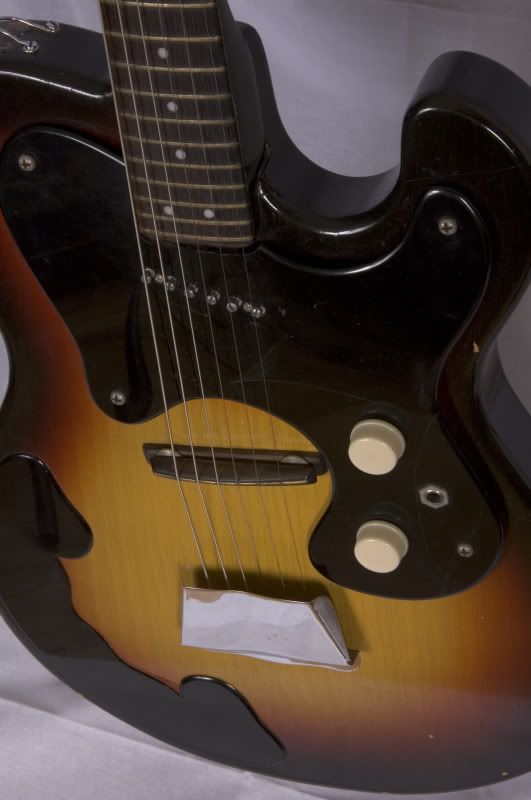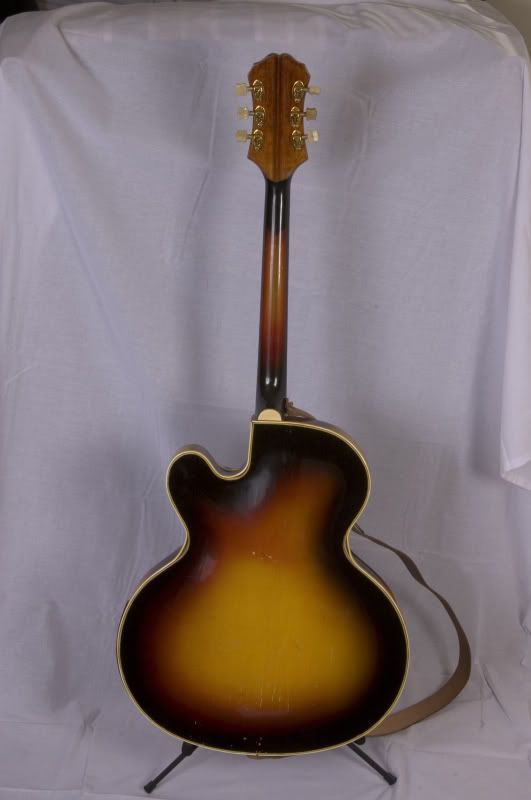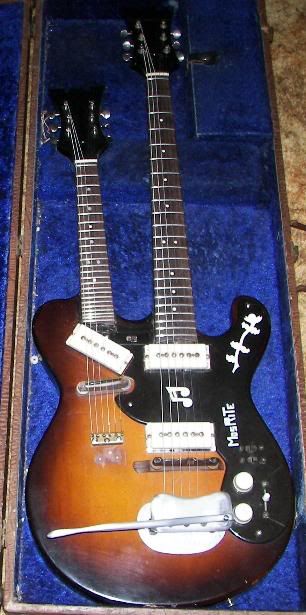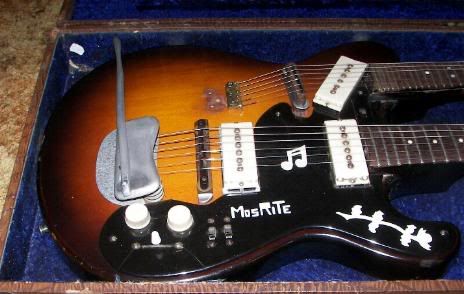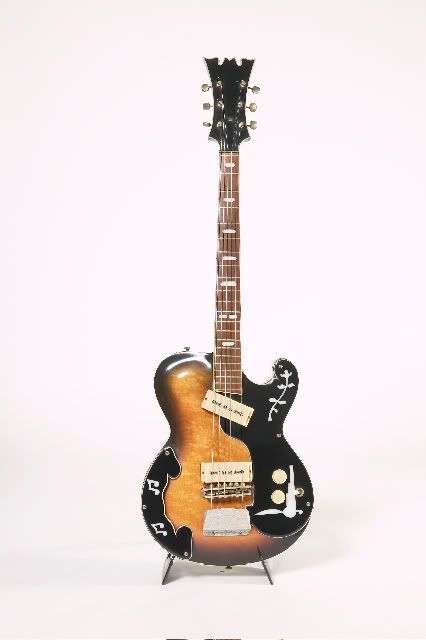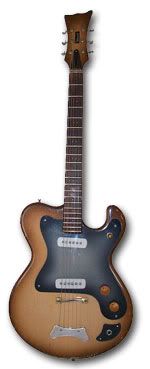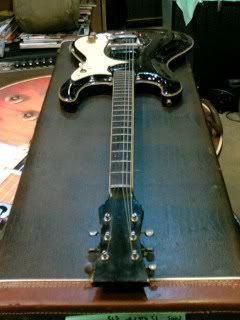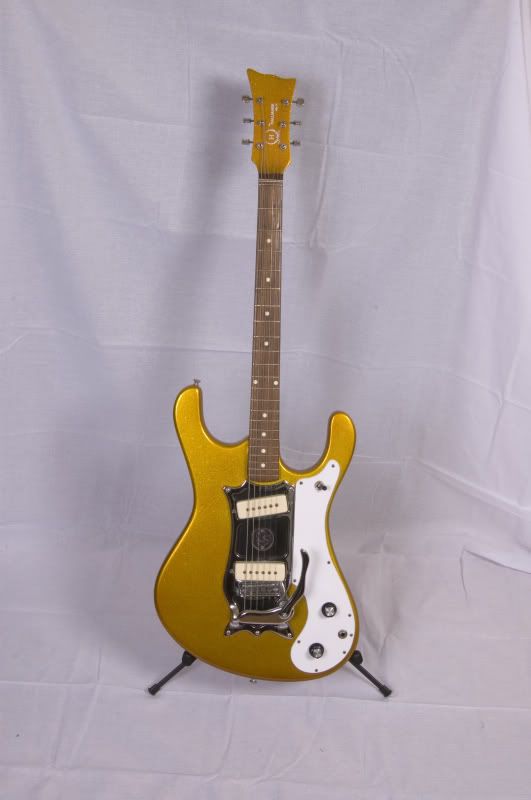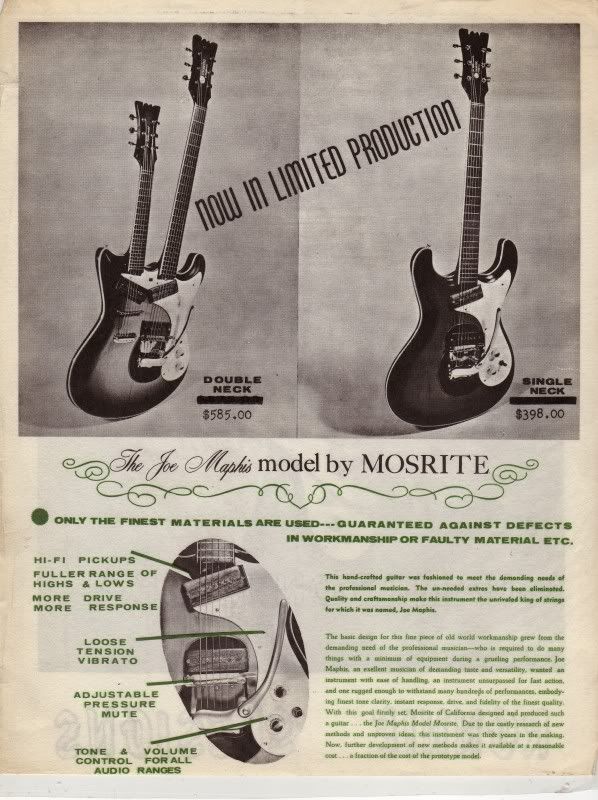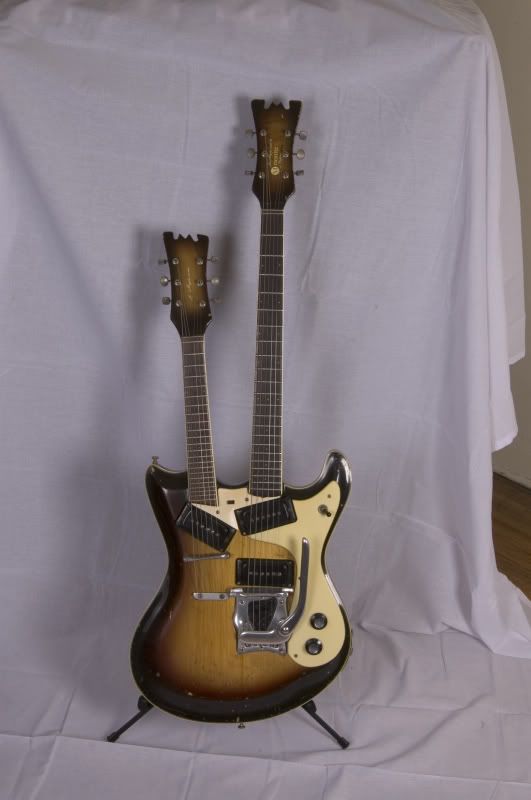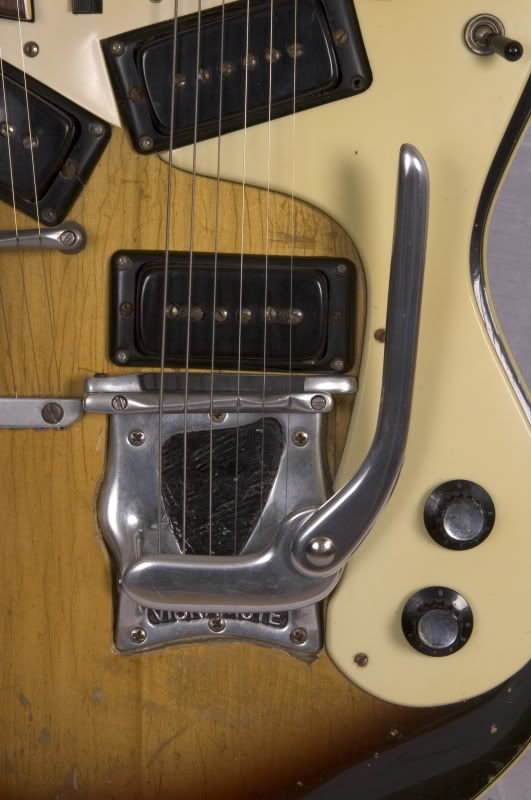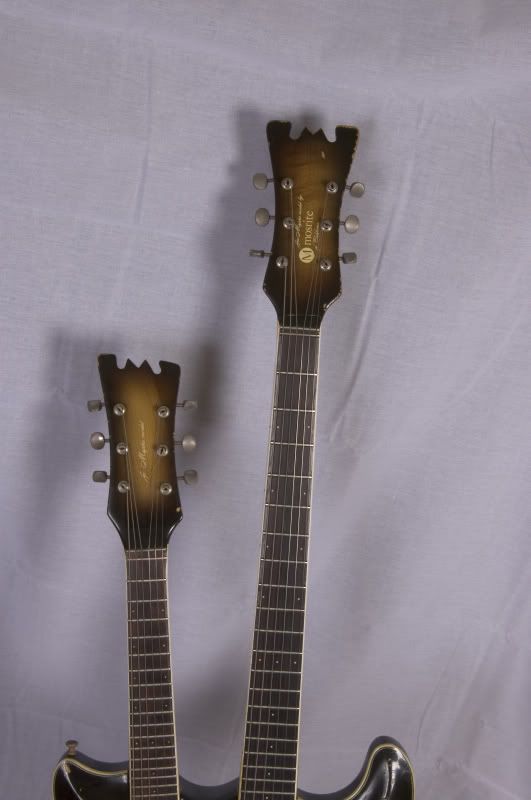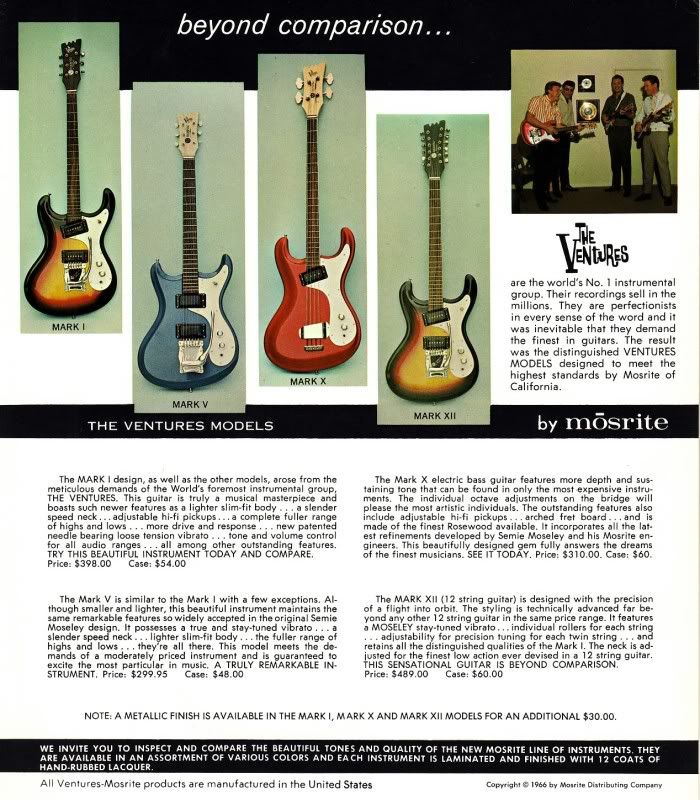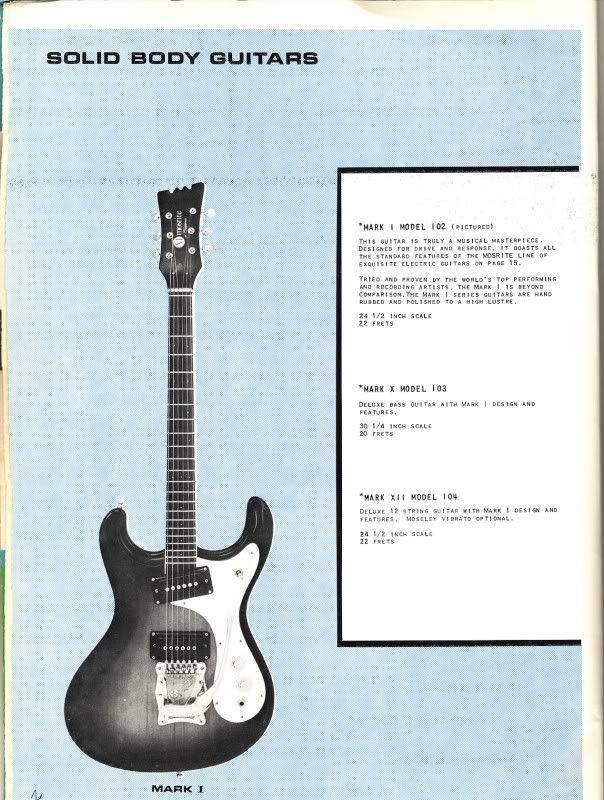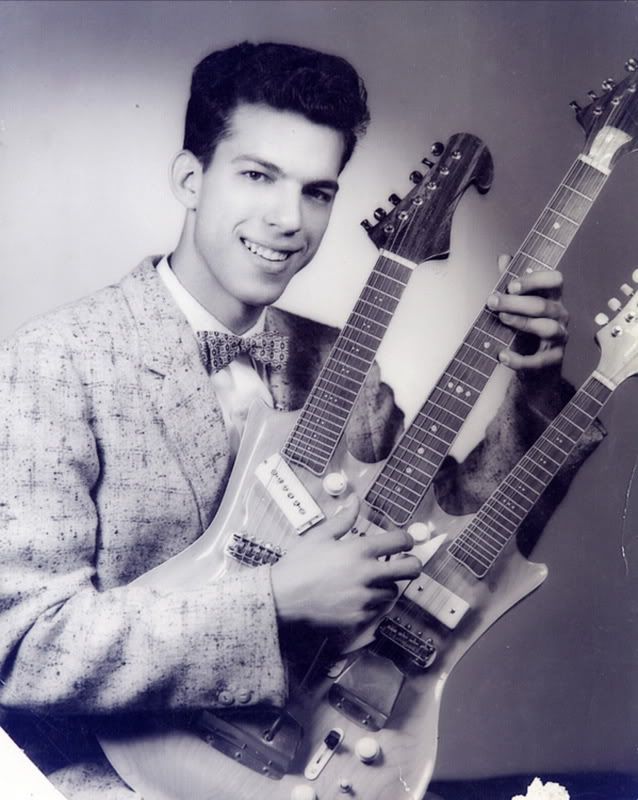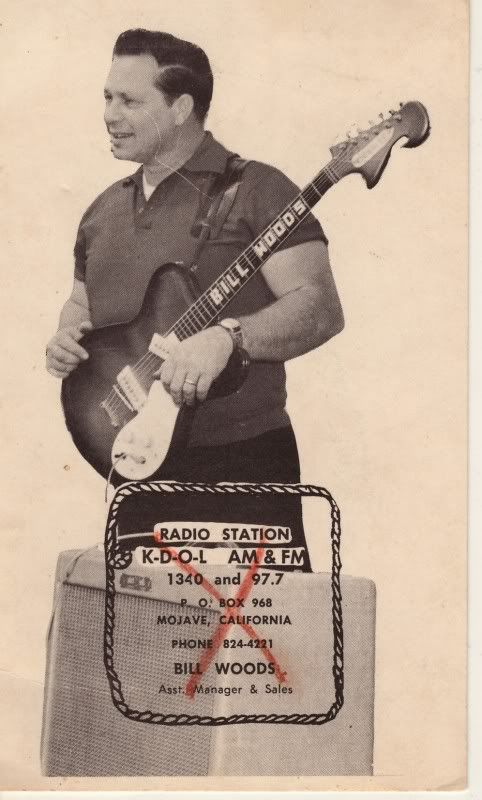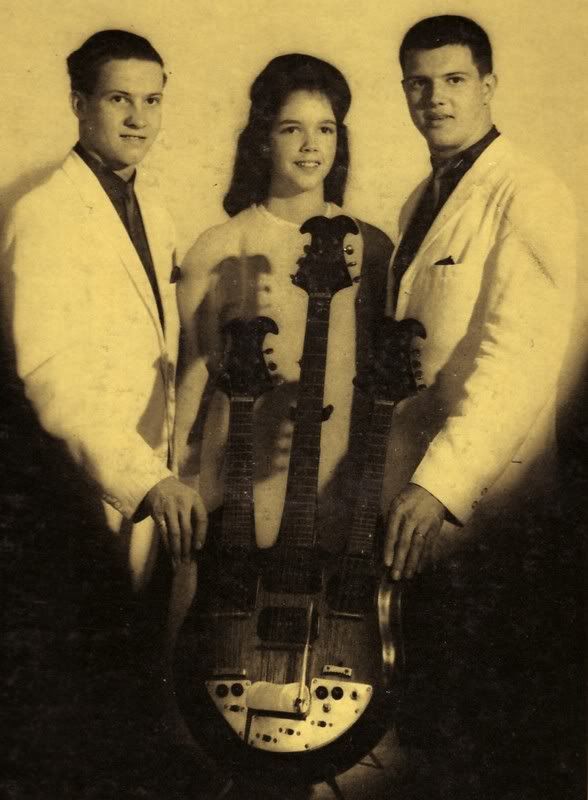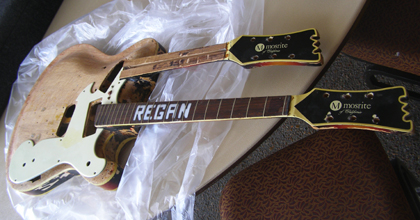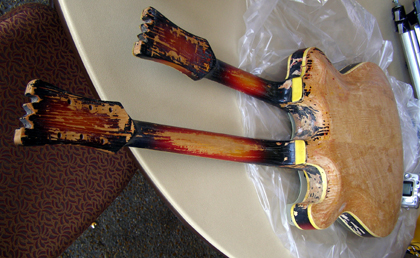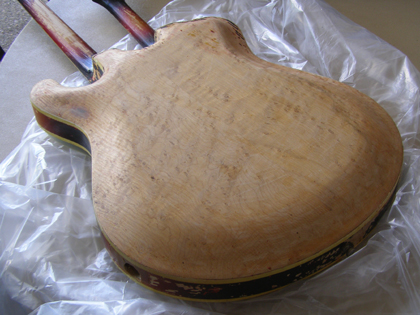I know that 99% of Mosrite obsession is based around the classic 1963-1968 Ventures model, but I've always been into the earlier, 1950's hillbilly-rockabilly custom creations. They sure don't turn up much, and the few I've managed to snag I'm mighty proud of.
The first one I'm going to post a photo of is an instrument from about 1959 or 1960, right as Semie was moving from his last L.A. location in Granada Hills to his first one in Bakersfield. Supposedly there were about 20 of these made for a local music store in San Fernando. I've seen about 5 examples of these in the flesh, including a double-pickup version with a cream-cover Carvin AP-6 next to the bridge (these have Carvin Ap-6 pickups in them, but submerged under the pickguard with the cover long gone). There was even a doubleneck version of this variant that some guy was trying to sell on ebay as Joe Maphis' personal guitar (it wasn't) for 50 grand (no bidders).
Okay, here's where I start to ramble and go off on a tangent. Here's Semie's chronology as I have come to understand it. There were lots of times Semie went off and toured with some gospel group and didn't make any guitars for a period, but here's where these guitars were made and when:
1952-1953 Semie did piecemeal work for Paul Bigsby (pickguards, inlay, poss. some necks). Semie was living with Reverend Boatwright in Norwalk, CA (various accounts including R.C. Allen)
1954-1955 Semie made his first few guitars, all while working for Rickenbacker and still living with Rev. Boatwright in Norwalk, CA. These first few guitars included his own custom tripleneck, and the doubleneck guitars for Joe Maphis and Larry Collins. (this according to F.C. Hall and Larry Collins)
1956-1958 Semie was working and I believe living at a music store in downtown Los Angeles, doing repairs and making his own guitars on the side, and doing customizing work. (this according to R.C. Allen and Del Casher)
1958-1960 Semie lived in Granada Hills in the San Fernando Valley and built guitars in a small shed. (this according to Terry McArthur, who apprenticed for Semie during this time)
1960 Semie moved to Bakersfield and lived with church people while trying to establish some guitar foothold. The earliest Bakersfield guitars are a major step back from the L.A. guitars, very simple and crude.
1961-1963 Semie established a "shop" on Panama Lane east of Bakersfield, in a tin shed behind fiddle player Jelly Sanders house. Semie and Andy Moseley lived in the shed and made guitars, enlisting local kids and guitar enthusiasts like Bill Gruggett and Joe Hall to do sanding and piecemeal work. This is where the first Ventures-style guitar emerged, first as a Standel prototype guitar, then as the "Joe Maphis Model" guitar which was then virtually swiped intact to become the Ventures model guitar. (this according to Bill Gruggett, Joe Hall, and a number of other Bakersfield musicians who remember coming to "the shed.")
1964-1968 The Ventures boom. Semie establishes a factory in downtown Bakersfield and Mosrite becomes a household name. After numerous bad money management decisions the factory and all assets are seized, and the tooling, machinery and leftover guitar stock is sold at auction.
1968-early 1970's Semie roams around California, making guitars from the leftover parts stash that he had. This is the origin of the "Mark I" guitar, and new models like the Bluesbender and the Brass Rail. Some were made in Bakersfield with Bill Gruggett, some were made in various other locales in California.
197??? Semie moves to Oklahoma and begins making the ill-fated "Sooner" models. Short-lived.
1976 Semie begins making the reissue of the Vibramute Ventures model for export to Japan.
197??? Semie moves to Jonas Ridge, North Carolina and establishes a small "factory" there. Hundreds of guitars are made in Jonas Ridge. A factory fire in the early 1980's wipes Semie out yet again.
198?? Semie gets an offer from the Arkansas State Board of Commerce to move his operation to Arkansas, take over a vacant Wal-Mart, and employ many luthiers and guitar makers left over from the Gretsch/Baldwin operation there.
Like I said, I'm more knowledgeable on the early years, so if somebody wants to help with exact dates post 1968, that'd be great. Back to THIS particular guitar....
This guitar is cool from a number of different standpoints, most notably it was the first single-neck electric instrument he ever "mass-produced." Everything else up to this point were one-off creations. The style of construction is very much taken from Bigsby, with a solid rail going from the neck joint to the tailpiece, surrounded by hollow "wings." Some unique touches on this guitar include the clear lucite nut and the solid black armrest (a nod to his earlier fancy inlaid armrests) and the early Bigsby-style strap "hooks."
On the other hand, this guitar was the first of what I would term the "starving Semie" guitars. There was a period where Semie was pretty hard up, basically the late 50's until the Ventures deal happened, where Semie made guitars out of whatever he could. Some of these guitars are really rough from a standpoint of woods and craftmanship, and this one falls in that category. For instance, the logo is spray-painted on, it has cheap tuners, the bridge is a simple wood bridge, the jack was mounted onto the flimsy pickguard with no reinforcement (and as such, every one of these I've seen has been broken and reglued). Semie was basically broke during this period and these guitars reflect this.
Well--it's a cool guitar nonetheless. Hope you enjoy the pics. One thing I would like to add without sounding like a paranoid weirdo is that THESE PICTURES ARE COPYRIGHTED AND FOR THE FORUM'S VIEWING PLEASURE ONLY. I paid a photographer for these photo sessions and I intend to use these photos in an upcoming book I'm working on so they are not to be copied and reproduced. Thanks!
Deke
